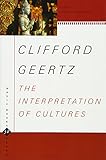“Webs of Significance,” Clifford Geertz
By Kristopher A. Nelson
in
June 2007
300 words / 2 min.
Tweet
Share
An individual is bound up in a series of symbolic or mythic representations – “man is an animal suspended in webs of significance he himself has spun” (Clifford Geertz, Interpretation of Cultures) – which serve to generate and maintain meaning. Together, these symbols and myths provide the structure for our world-views. They constitute a cohesive […]

Please note that this post is from 2007. Evaluate with care and in light of later events.

An individual is bound up in a series of symbolic or mythic representations — “man is an animal suspended in webs of significance he himself has spun” (Clifford Geertz, Interpretation of Cultures) — which serve to generate and maintain meaning.
Together, these symbols and myths provide the structure for our world-views. They constitute a cohesive narrative of existence, a kind mental map (or text) which functions, in much the same way as a geographic map, as a guide to the terrain of life.
From them we generate ideas, interact with people, deal with new situations, and perform other activities we would be unable to do without a framework in which to make decisions. But inevitably, the categorization which is involved in the process of map-formation leaves distortions or even blank spaces in the map, giant regions of unexplored or inaccurate territory.
— From my thesis paper: But That Speaking Makes It So.
Sadly, Clifford Geertz passed away in 2006. He was a foundational figure in my approach to research and writing. A “champion of symbolic anthropology,” Geertz focused on the symbolic basis of our lives. Culture, for Geertz, was “a system of inherited conceptions expressed in symbolic forms by means of which people communicate, perpetuate, and develop their knowledge about and attitudes toward life.”
For more on Geertz (and “Webs of Significance”), see, for example:
- Geertz and interpretation
- Clifford Geertz, Cultural Anthropologist, is Dead at 80
- Clifford Geertz, 1926 – 2006
- Anthropologist Biographies: Clifford Geertz